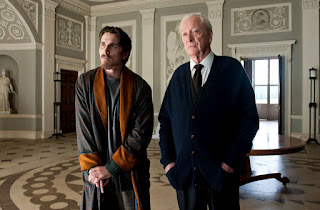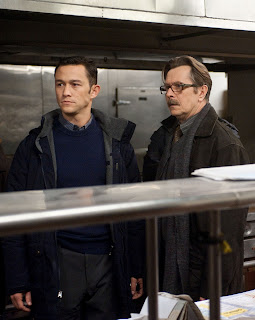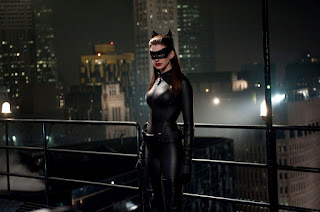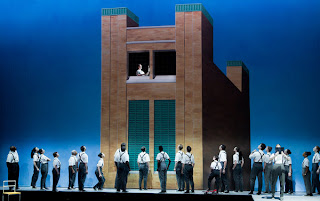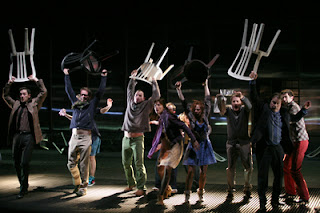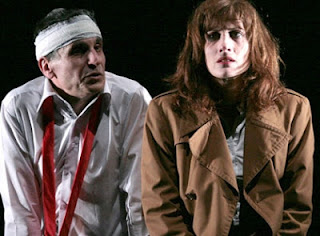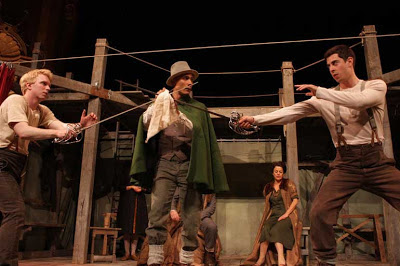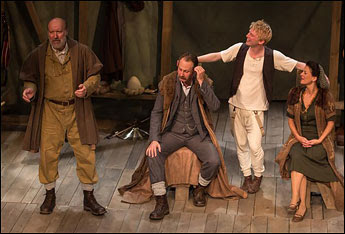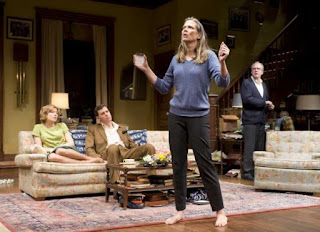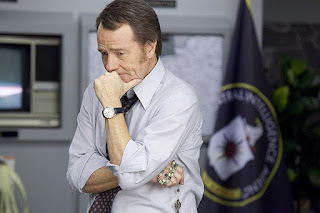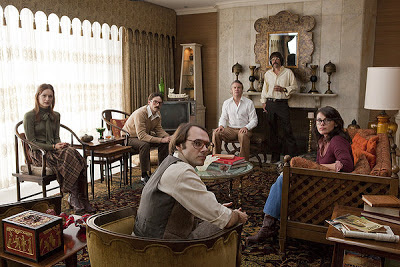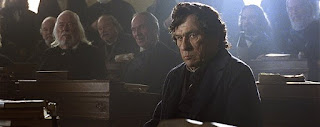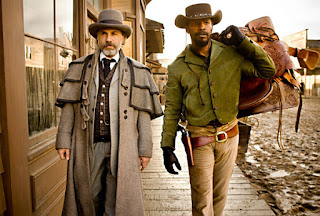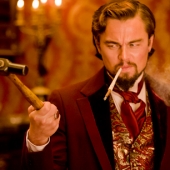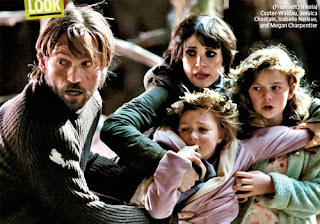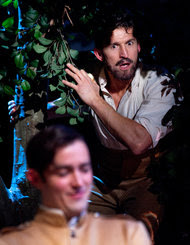![]() |
| Moon over Montauk |
It’s been a weird couple weeks. Well, month.
In August, I learned of three deaths. Not the usual celebrity deaths of people we don’t actually know and who are way older than my friends and myself. No. Closer. First an old friend, teacher, mentor. He’d been ill — various — for some time, so the email from his grown children wasn’t a surprise, exactly. More like, I was due to give Robert a call, and now I’m too late.
The next day, my friend Horvendile informed me of the death of a newer friend, ill for a shorter period of time. A lovely man, a man of the theatre and the world. A mentor to many. I was glad to have had him in my life, albeit for too short a time.
That weekend I learned of my third: a woman I’d worked with a quarter century ago, when I still worked in juvenile publishing. She and I shared a room at my first and only science fiction convention, outside Philadelphia, decades ago. She gave me freelance work reading and reporting on over-the-transom manuscripts. Josepha had friends throughout the publishing industry, in various genres, and my long-ago memories of her were good ones. That she’s gone is shocking.
That’s how August ended. I started September by going on vacation to my favorite spot out in Montauk. Favorite is a silly word — it implies a vast knowledge of spots, people, books, whatever, from which to choose. I haven’t been so many places that the Atlantic Terrace in Montauk being my favorite for a relaxing, totally laid back vacation is meaningful or measurable. Nonetheless, it was the right place at the right time for me this year.
Tuesday, 4 September
It had rained hard as I drove east on the LIE, visibility distressingly low. My audio-book purchase was validated. Allyson Ryan’s recording of a charming children’s book (SuddenlySupernatural by Elizabeth Cody Kimmel) was a comfort, if it did pull my attention from the dull road on occasion! The storm lessened to nothing as I turned off the expressway, onto Suffolk 111 south down to Montauk 27.
Traffic was light after the Labor Day weekend, and I made good time until I stopped at “Lunch” (
a.k.a. Lobster Roll restaurant ) between Amagansett and Montauk and had my first fish meal of vacation.
It’s such a comfortable place, with music of my youth playing not too loud, no one rushing me over my lobster roll and slaw and good fries.
I had requested the ocean-facing room with the most light — a window in the wall facing southwest (ish) in addition to the balcony looking out on the ocean. I could lie on the bed and see a show of seagulls swooping and gliding outside that window, coming in low, then veering south or upward at the last moment. Missing my cats, at least I could watch the gulls, and listen to their calls outside between poundings of the surf onto the shore. They would have been fascinated by the roar of the surf — Wilbur would be under the bed, of course, but eventually he’d stand with his hind feet on the dresser and peer out the side window.
Wednesday 5 September
I woke two hours after hitting the snooze. I heard a cat breathing around me, but no weight rolled onto my head as she settled. I heard a cat crying outside, then realized it was a child screching as the waves bounded up the shore toward her. She ran behind her father, who carried another child on his back. Montauk.
The ocean was rough, moving inexorably up the shore. Perhaps that’s why I dreamt of being out there, happily diving through one large wave only to be caught by the next that followed close upon.
People are in the pool, adults and children, children taken out of school during the first week so they could go on vacation. Odd. To me. The wind was hearty but warm. The cloud cover was heavy, the outcropping to the southeast a blur. A patch of sun a quarter mile out on the surface of the sea looked manmade.
A young fellow flew a kite, with intensity. A gull opposite him flapped violently, fighting the wind before it could settle where it chose among its cohorts. I’d thought for a moment the man was working a kite that looked like a gull landing, so in synch were their actions.
A boxer pup evaded his human’s camera and watched the kite flyer, who landed his black and red and purple kite precisely. It was not shaped like a gray gull. A female in a pink hoodie walked toward the water with the dog running to keep up with her on its stubby little legs. When she stopped reading her phone, she tried to take a picture. To the dog, it must have seemed its human was not only looking at him but pointing her toy at him, that toy that takes all her attention away from him, so he walked right to her, spoiling her shot. Which makes me think of Dashiell, dead 15 years at least, who always did the same thing. Sweet cat that he was, he’d walk right to me, ruining the focus.
![]()
When I finally went for a walk to town, I was in the wrong shoes. My left heel had started bothering me over the weekend — for "bothered," read "hurt." Stretching it hadn’t helped yet. Nor did Dr. Scholl’s Comfort Fit Orthotic Inserts. It started to rain on my way back, and I took off my shoes to walk along the shore toward the east. Ah. The only time my heel didn’t hurt was when it sank into the sand.
The fog made the distance fuzzy. There was a new ridge of sand on the beach; the storms must have been worse out here than in the boroughs. A spot I walk by each visit, and photograph each visit, was dry, but different. It’s been wearing down gradually for years, with run-off from storms carving a slope into the beach itself. It appears to have fallen down aggressively since last time I was here. That was just 11 months ago. I must compare the photos.
Thursday 6 September
I walked to the post office to mail my postcards to friends’ children, then couldn’t keep away from Montauk’s tiny bookstore. With the clear exception of the front bay window, the small space is lined with shelves, from floor to ceiling, back to front. I always stop by here and always find something I must have, despite the books already in my hotel room (not to mention my home). I walked back past what used to be Nick’s and is now Sloppy Tuna. Instead of gourmet meals of Nick’s (which were rich and delicious), simpler fare is now offered there, and I went back in the evening for a light meal and a drink overlooking the sea. Nicely redone interiors and exterior, great view as the sun sets behind the diners and twilight falls onto the sea — but the food was nothing special.
8 September
On my last night I had a nice meal at Shagwong. On my last morning, I swam in the pool for half an hour or so before heading home. Television news said a storm was heading in. When I stopped in Amagansett at the farmer’s market, my friend called to tell me there were tornado warnings. The drive home was windy but without precipitation — the tornados touched down on the south shore of Queens, nowhere near me. Lucky again.
12 September
Settling back in to real life. Back to work, back to laundry, back to cooking and doing my own vacuuming.
Last night, I read an article — well, not so much an article as an opinion piece, I suppose — in the New Yorker that basically told me that I, as a woman who is not a mom, am extraneous. Swell. There’s a rude gesture I could make to any society that labels me “extraneous.” My vacation relaxation is now officially gone. Summer is over. Moving on to the winter of my discontent, it’s time to immerse myself in the new theatre season so as to avoid my immaterial, inessential inner thoughts.
~ Molly Matera, signing off. Extraneously.









